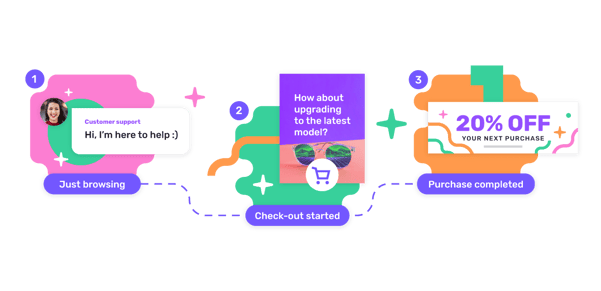Consumers are expecting more and more hassle-free, convenient shopping experiences.
Retailers are under more pressure to improve their eCommerce sales strategy and achieve good results, especially during busy times.
But how can you ensure that you optimize your strategy to meet those customer needs and increase online sales?
In this post, we share our best practices to help you increase your ecommerce sales and rise above the competition!
What is an eCommerce sales strategy?
Your eCommerce sales strategy involves engaging new and returning customers to make them loyal buyers. All while increasing the demand for your products and services in your eCommerce store.
Your best eCommerce strategies take several different forms.
Successful eCommerce companies include optimizing the customer experience, effective digital marketing, personalized recommendations, and using data in their practices.
Do you want to increase your sales figures?
Here are some proven and best ways for you to do that! 😊
12 Best ways to increase eCommerce sales:
1. Learn from the past
2. Personalize your shopping experience
3. Be proactive in your approach
4. Up-sell and cross-sell strategically
5. Gamify your seasonal promotions
Inspiration for your next campaign
6. Optimize your offers with A/B testing
7. Stand out with interactive ads
8. Retarget and re-engage your customers
9. Provide sales-focused support
10. Automate FAQs with bots
11. Think mobile-first
12. Gather meaningful data
Example: sales-oriented live chat
Next steps
1. Learn from last year's campaigns
Online shopping has undoubtedly become a regular part of people's lives.
Experts actually expect the global eCommerce market to hit $7.3 trillion by the end of 2025. This means that companies have done good business regardless of numerous obstacles.
So why not take advantage of past years' learnings and use them as a foundation for your next peak season eCommerce strategy?
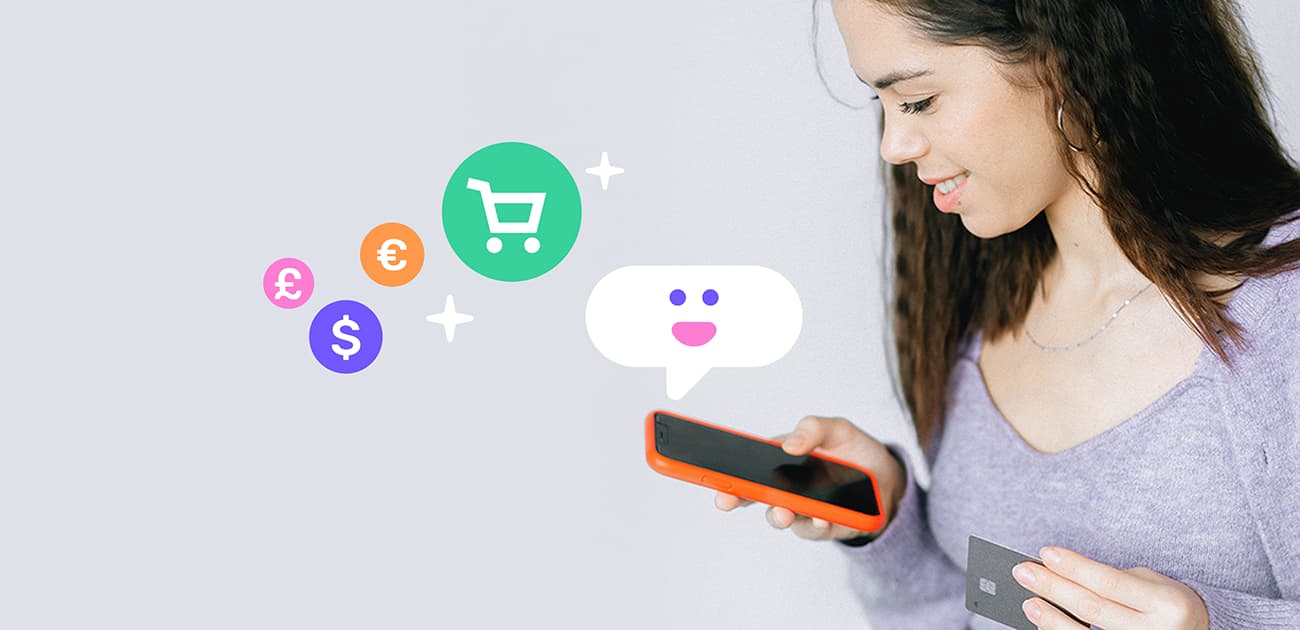
Start by digging up your past action plans and data for example on your best-selling items, sales times, and performing campaigns. This will give you a template for moving forward and taking your strategy to the next level.
Use this to segment customers based on their behavior, and target them with relevant and timely offers.
Here are some metrics to look out for:
Promotions
Which of your offers performed the best? Was it free shipping or a discount code? Compare offers and learn which promotions gave the best results and helped reach your campaign goals.
Channels
Which channels converted the most sales? During the holidays, advertising is very competitive. Don't let advertising costs take away all your profit. Knowing which channel worked best last year will give you a guideline for budget allocation.
Timing
The holiday calendar is full of important dates, so naturally offers run at different times, with varying durations.
Halloween and Black Friday last one day, but pre-Christmas promotions can go on for weeks.
When you make offers can affect your sales and website's functionality, so be careful to avoid crashes.
Buyer's journey
When planning for new seasonal sales look into your buyers and what they do before purchase. Where did your customers need help on your site? At what points of the checkout process did your customers fall off their purchasing journey?
Analyzing this data will help your campaigns succeed, achieve ROI, and generate more satisfied customers.
2. Personalize your online customer experience
If you consider one aspect that is missing from many eCommerce sales, it's often the personalized experience.
80% of the customers are more likely to purchase from a brand that provides personalized experiences.
Just like in a store, brands should provide similar customized services online.
Using marketing automation data ensures that each visitor gets a personalized experience tailored to their current buying stage
You can achieve this by tailoring your promotions, offers, and interactions based on:
- What page your visitor is on
- Where your visitors are on your page
- Where they came from - so their traffic source or campaign URL
- Which country they are from
- The number of times they have been on your website
- Their shopping basket value
3. Be proactive in your approach
Just like selling in-store, online customer service should also be proactive, not reactive.
You can achieve this by targeting visitors based on their past behavior and actions on your website.
With giosg's rule-based workflows or AI targeting, you can automatically show personalized pop-ups and banners to customers.
AI helps to convert website visitors by identifying and prioritizing shoppers and triggering customized actions to meet their specific needs.
You can also bring your personal selling experience online with the use of voice and video chat. These are exceptional tools in sales-oriented customer service.
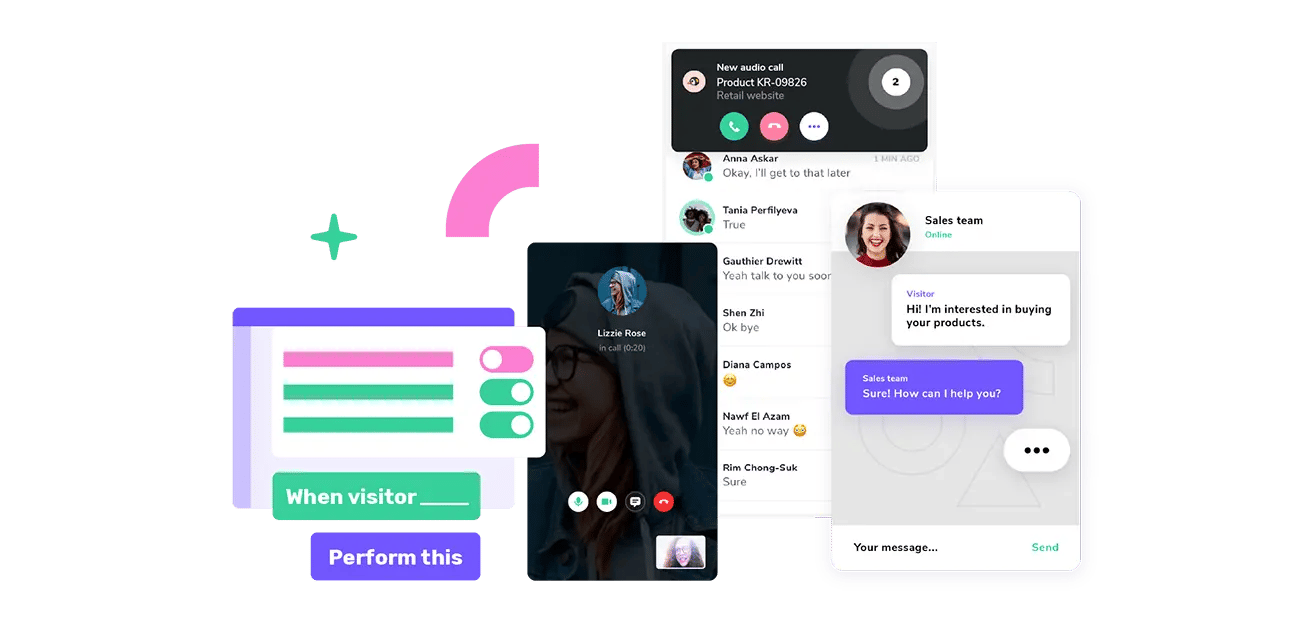
To drive sales, make sure to use real-time customer behavioral data to your best advantage. Just like in-store, where you can advise the customer or guide them in a specific direction, based on what they're looking for.
Equip online customer service with this service as well.
Tools like giosg in eCommerce allow you to offer online services with a shopping cart integration. Your salespeople can view the visitor's shopping cart during their chat.
This enables the sales personnel to be proactive and address the concerns immediately.
You should also make sure to be proactive outside the website, too.
For example, fulfillment centers in eCommerce can make or break customer loyalty. You’ll need to ensure that people at your warehouses are getting products out quickly.
Otherwise, the data used for the initial sale may go to waste, as late deliveries are unlikely to encourage repeat customers.
4. Up-sell and cross-sell strategically
Insights into your customer’s shopping patterns will enable the sales team to up-sell and cross-sell efficiently.
Shoppers with items in their baskets present an opportunity for cross-selling and up-selling.
Real-time visibility of the shopping cart, along with the shopper's history, opens up various sales and marketing possibilities. Here are a few:
- Cross-Sell: Suggest a value pack of relevant items when a shopper adds an item to the basket through a chat message.
- Up-Sell: Display a pop-up recommending a newer and better version of the item with a higher value when added to the basket.
- Offers: Encourage shoppers with a basket value of £60 to reach £75 or £100 by reminding them of exclusive discounts and offers.
Automate this process as much as you can, to focus on high-value leads at the right time and effectively!
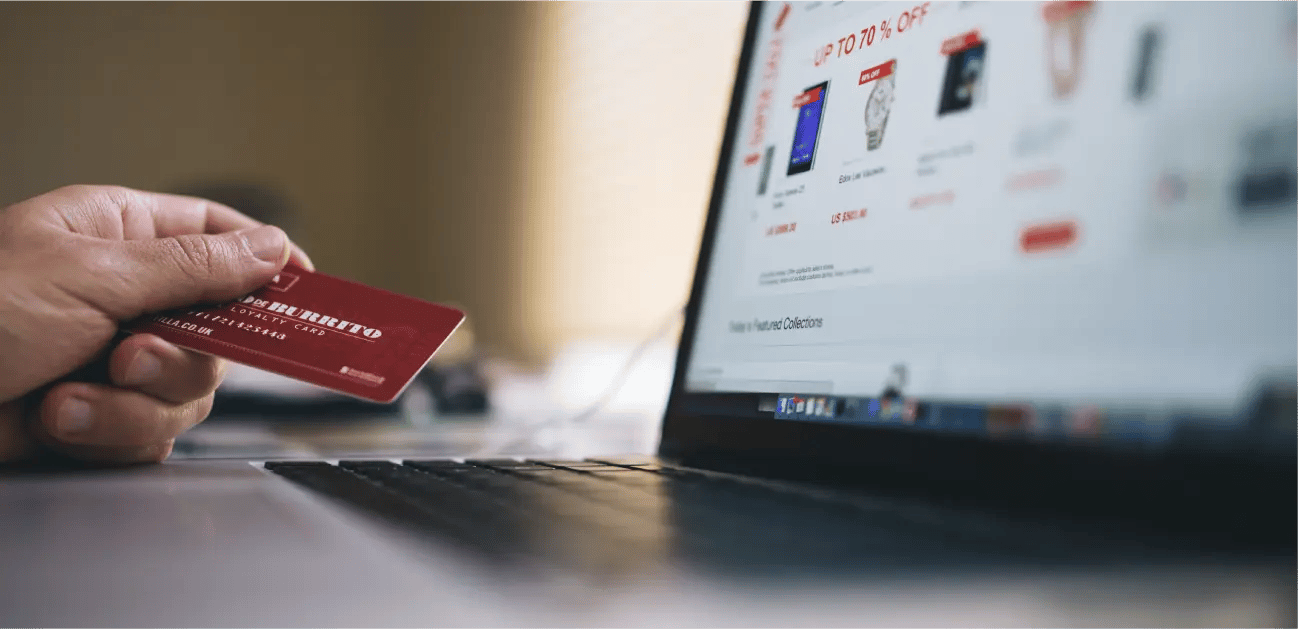
5. Gamify seasonal online store promotions
Believe it or not, consumers today have a shorter attention span than goldfish – meaning brands have a mere 8 seconds to catch their interest.
With limited time available, the pressure is on to prepare your peak-season eCommerce strategy and design campaigns that captivate and convert potential online shoppers.
Consider incorporating gamifying your online store and crafting interactive sales-focused campaigns to achieve the desired level of engagement.
It increases the interactivity of your campaigns giving that extra push to speed up your sales cycle.
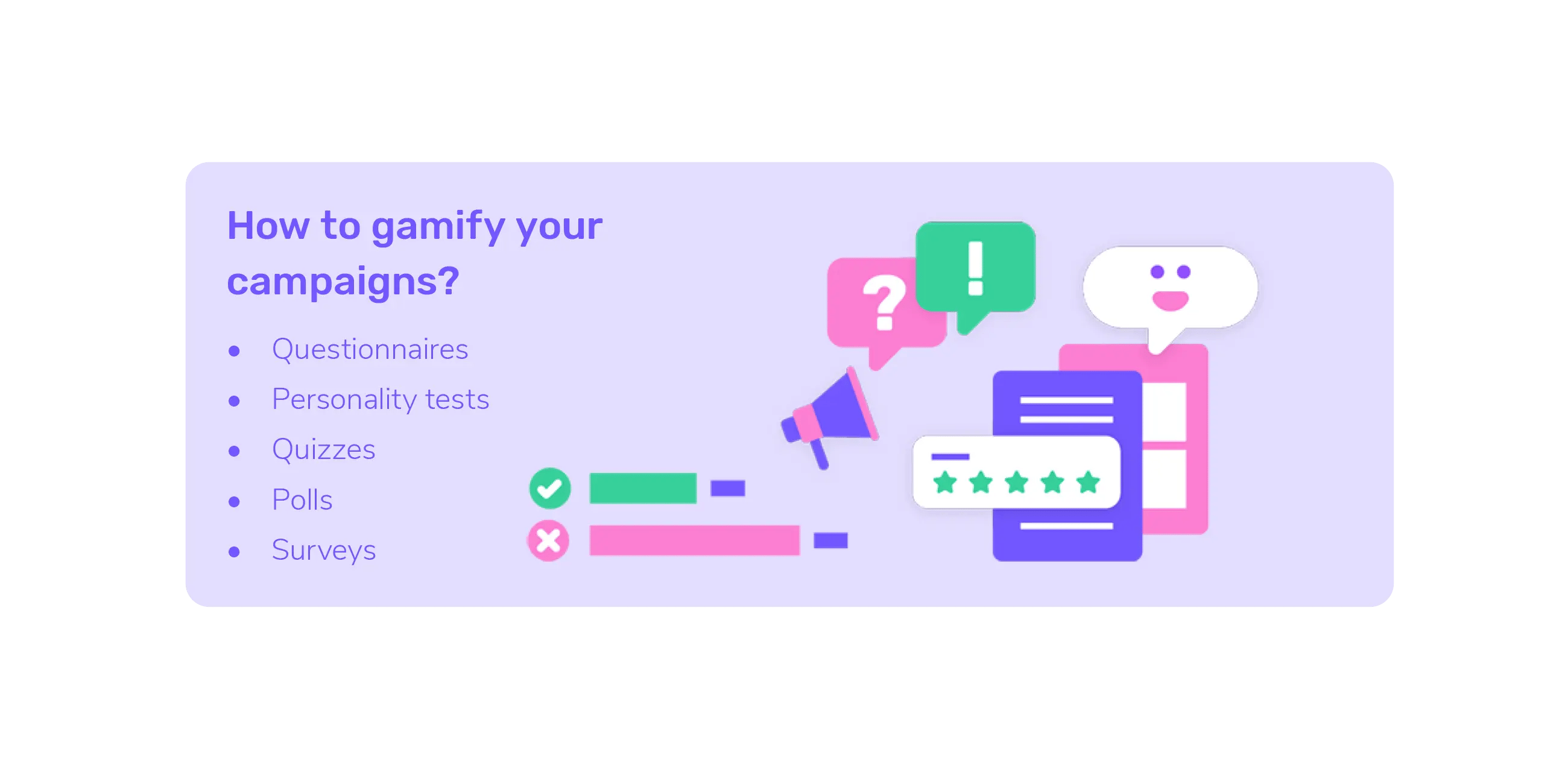 Creating interactive campaigns has the potential to increase conversion rates and drive weekly newsletter subscriptions by four times.
Creating interactive campaigns has the potential to increase conversion rates and drive weekly newsletter subscriptions by four times.
It's highly effective in collecting additional customer data, enabling you to segment and personalize your offerings even more.
A great tool for refining and building your database.
Best practices for your next peak season campaign
- Tap into Black Friday by gamifying your discounts. Create a quiz on your website, where visitors can play to win free shipping or an even better discount. Make the experience fun and personalized, while encouraging them to purchase.
- Publish an advent calendar for your Christmas campaign on your website. Visitors can get a new promotion or discount code only on that particular day. This can help drive traffic to your website and promote your seasonal products!
- Use quizzes to generate more newsletter subscribers or to build your mailing list. Quizzes work as data collection points to segment your customer base for personalization.
Find out more about how to use gamification in Halloween marketing campaigns to increase brand awareness and engagement!
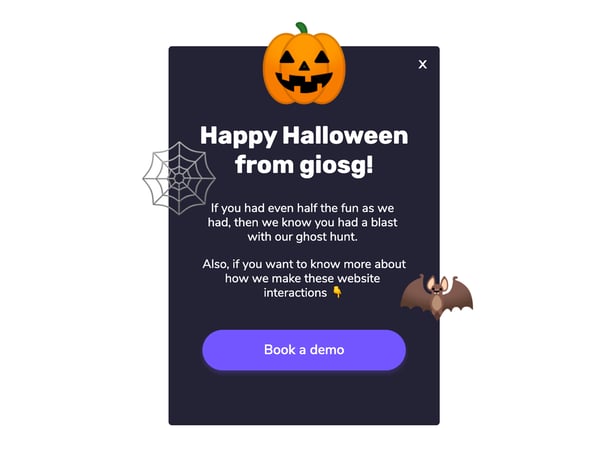
Many marketers who don't use interactive content are hesitant due to a lack of technical expertise and uncertainty about where to begin.
And understandably so – it can feel overwhelming if you don't have the right tools in place. Consider investing in a platform that lets you take matters into your own hands.
Using tools that require no coding, means you don’t need IT or a marketing agency to launch your new campaigns.
This gives you flexibility to build your holiday campaigns, make changes on the fly, and adjust them as you go along.
6. Optimize your offers with A/B testing
Even with all of last year's data and learnings, you can't expect to hit the nail on the head.
Sometimes the market changes, your business goals might evolve, and what worked previously simply might not be the best solution this year.
That’s why A/B testing is such an effective tool, it helps you learn more about what resonates with your audience and drives better results.
And it's not just for your email campaigns — it's also a great way to improve the conversation rate of your interactions. You can experiment with elements such as pop-ups, live chat, chatbots, or even quizzes or games.
A/B testing is all about iterating changes that drive results and marketing strategy ROI.
Once you have the data, make your changes accordingly and move on to test other elements!
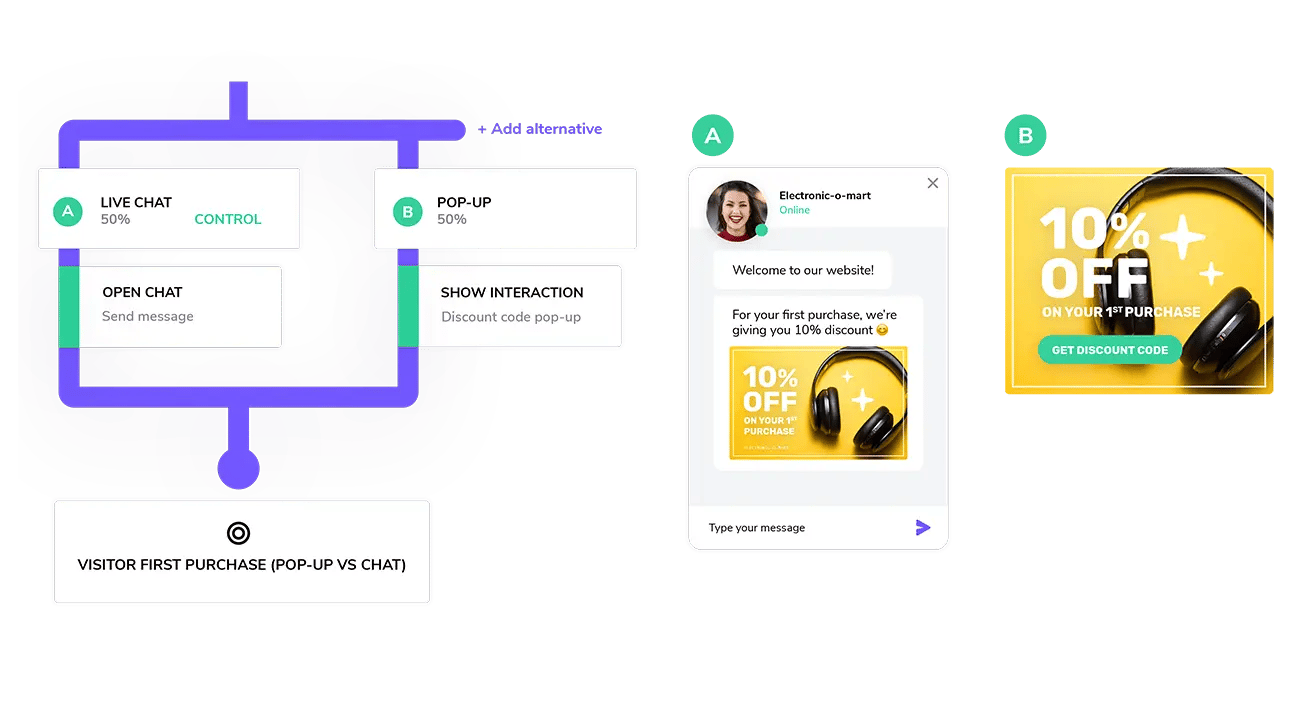
7. Stand out with interactive digital marketing
For retail businesses, peak sales seasons are one of the most competitive times of the year for advertising.
Avoid banner blindness and cut through the noise by promoting your campaigns across channels with rich media interactive ads. These will allow you to provide unique ad experiences that increase conversion rates.
Interactive ads differ from static display ads as they prompt consumers to engage with them, often featuring video, images, audio, or animation.
Interactive video ads can increase the time consumers spend with your brand's ads by 47% compared to static non-interactive ads.
These ads respond to user actions, such as expanding when scrolled, playing a video on click, or enlarging when hovered over. It's a powerful method for marketers to extend consumer engagement with their brand.
With giosg, creating and publishing interactive ads is simple, as they seamlessly integrate with advertising platforms like Google Ads, Adform, and Xandr (AppNexus).
How interactive ads help you increase eCommerce sales:
- Improve your shopping experience: Unlike static ads, they don't force the visitor to a publisher’s website and hence don’t interrupt a visitor’s browsing experience.
- Increase lead capture: Interactive ads will allow lead capture to take place outside of your eCommerce site with lead form extensions within the ad.
- Increase CTR: Rich media ads have been proven to deliver a high click-through rate, outperforming banner ads by 267%.
8. Retarget and re-engage your customers
When it comes to selling products online, it is very important to gauge the customer’s attention in the early stages of the buyer’s journey.
An easy way to do this is retargeting relevant content on your customer’s feed or search results, based on their previous actions on your website.
Retargeting helps to reach potential customers, who didn’t convert yet.
This is usually done with the help of specific URLs and in retail this enables you to track certain products or product categories. But what if you could do more?
Giosg helps you retarget audiences based on various interaction triggers.
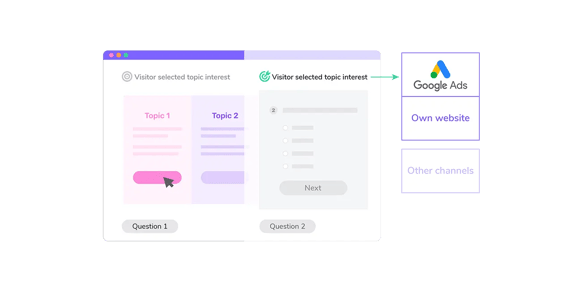
Just remember to provide engaging and personalized interactions at different touchpoints first. This will help you get unique information about your visitors which can be used to further customize your retargeting ads.
For example, a visitor is shown a campaign pop-up quiz on your site, but before leaving their contact information they’ve abandoned your website — unconverted.
Instead of losing the potential customer, you can use all the insight on the visitor to build a targeted and specific retargeting audience.

How to retarget your eCommerce customers:
- Quizzes or surveys with lower engagement barriers compared to traditional fill-out forms
- Visitor demographics
- Visitor interests based on their conversation path with your bots
- Visitors who chatted with you or clicked on a form
9. Provide sales-focused support to avoid cart abandonment
With increased website traffic, support inquiries regarding your promotions, delivery times, returns, etc. are bound to go through the roof.
Providing your customer service team with the right tools will ensure your site is ready for the sales season rush.
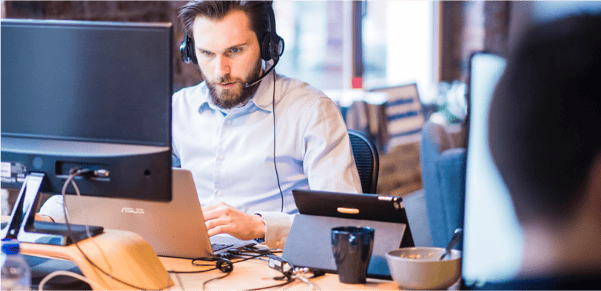
Take live chat for instance – when automated and targeted correctly, it doesn't only provide customers with proactive real-time support but can help increase conversation rates and boost sales.
10. Automate FAQs with chatbots
Having an online store means sales 24/7. But your team can’t be there to answer customer queries around the clock.
That’s where a dedicated FAQ bot comes in handy — providing support outside of your working hours when your well-deserved customer service team is asleep.
Building an FAQ bot makes targeting visitors who require help possible and allows visitors to self-serve and find answers immediately.
On the other hand, during retail opening hours, FAQ bots free up your team's time and resources.
eCommerce FAQs to add to your bot:
- Delivery charges or times
- Payment methods
- Product availability
- Promotion running times
- Promotion terms and conditions
- Returns and refunds
FAQ bots educate novice shoppers about your checkout journey and reassure them that it’s safe and secure to make a purchase – in turn helping your online sales grow!
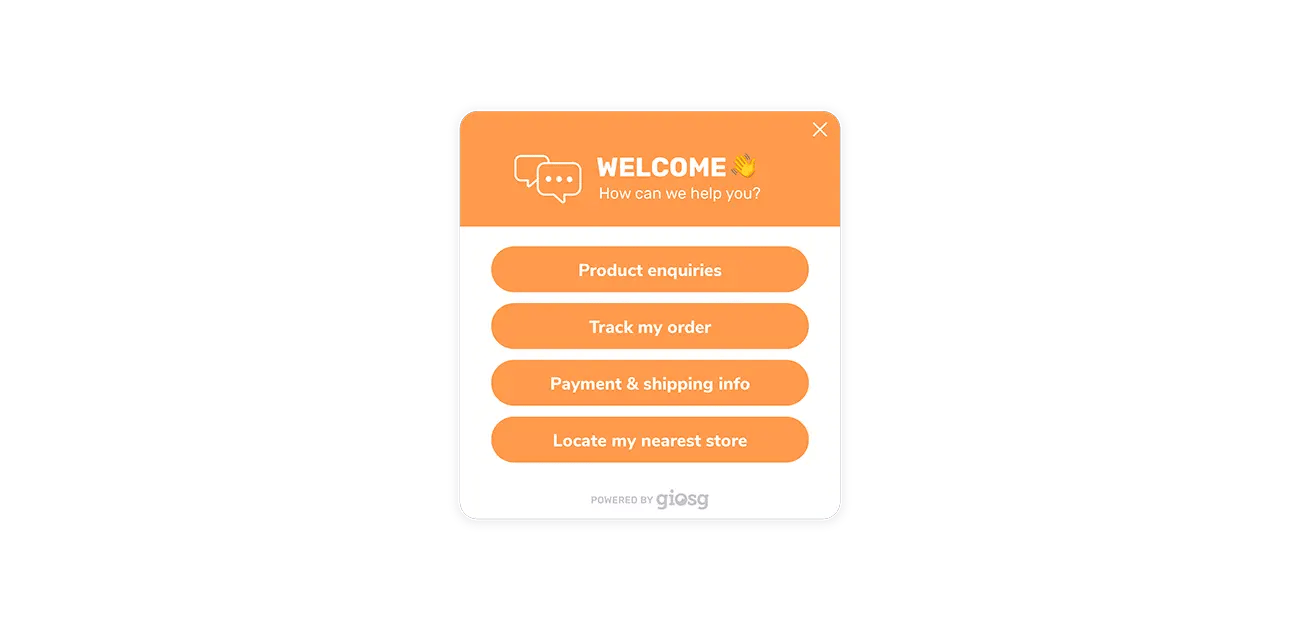
11. Think mobile-first
Over the past decade, mobile usage has grown significantly and the share of mobile commerce or “m-commerce” in all eCommerce was even expected to rise to over 63% by the year 2027.
This can be accredited to the quick adoption of new smart devices and an ever-growing screen size that makes browsing and purchasing online easy.
This means that more and more customers are using their smartphones and tablets to shop online.
Recent eCommerce stats by WPAstra show that "62% of customers won’t buy from you again if your store is not optimized for mobile".
Not optimizing your eCommerce website for mobile can cost online retailers a loss of market share!
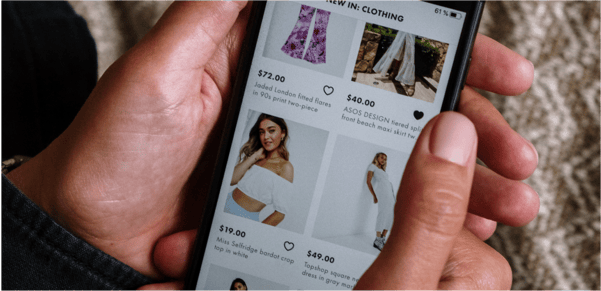
For your peak sales season eCommerce strategy, it’s worth thinking mobile-first not just in terms of marketing and sales, but customer service as well.
Mobile devices now account for over half of the time spent on the internet and a 56% share of all web traffic. That’s why it’s crucial to shape the experience accordingly.
12. Gather meaningful data for your eCommerce platform
Data has become the new gold and is vital for eCommerce brands to improve marketing ROI and determine the success of their peak sales season campaigns – we can’t stress this enough.
From analyzing last year's successes and personalization to A/B testing and optimizing your campaigns – data is the common denominator.
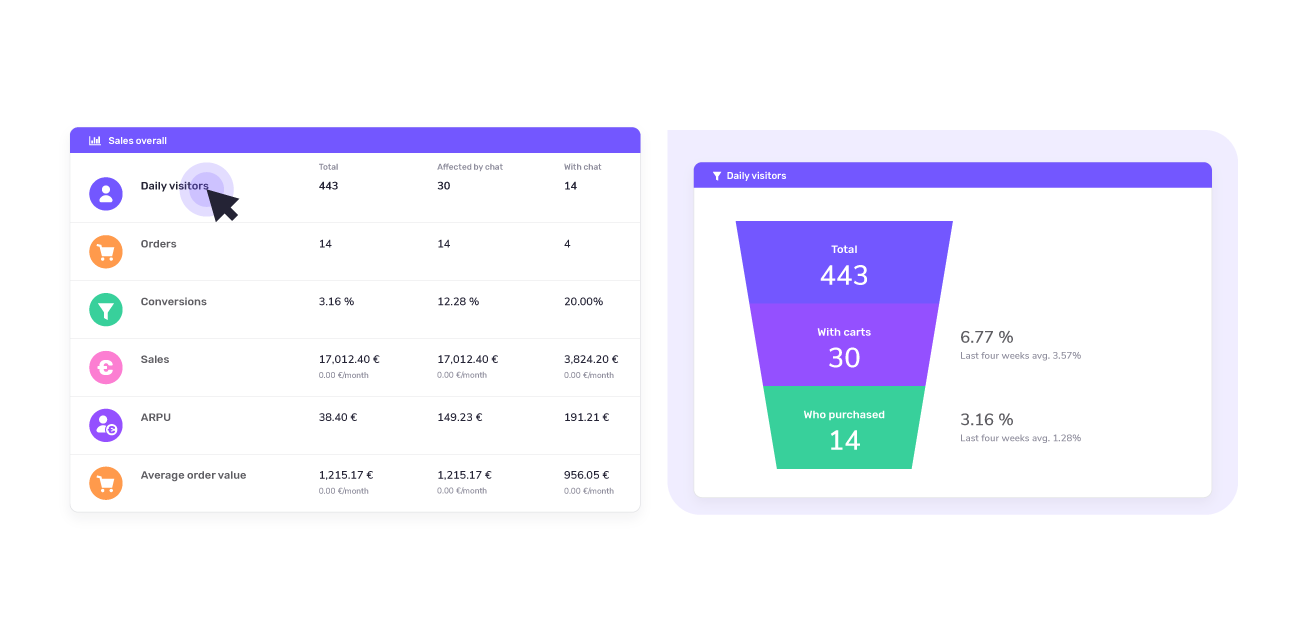
But for it to have any kind of value, data should be examined throughout the entire lifecycle of your campaigns. Thankfully today, data can be viewed in real-time in almost all analytics tools.
Real-time analytics offers online retailers actionable insights that provide accurate, timely, and effective decision-making.
Leveraging real-time data will enable you to refine your eCommerce strategy and enhance your online sales efforts accordingly.
.png?width=1300&height=731&name=Blog%20visuals%20(18).png)
When deciding which metrics and data you want to follow, first start by considering your goals.
Focus on the end goal and look into what metrics should be measured and which KPIs should be tracked. Think about the different data that influence and affect your goal both indirectly and directly.
Example: Sales-oriented live chat
If your goal is to increase conversions on your eCommerce website using live chat, there are some factors to keep in mind that can affect conversions.
- Traffic - your visitor amounts and visitor times
A good benchmark is that 0,5% of all website visitors chat or interact with you. Also, look at the timing of your traffic - when are your visitors visiting your pages? - Autosuggest conversion
Different kinds of autosuggest significantly affect what kind of conversations you get - proactivity also increases the number of contacts. - Response times
How quickly are you able to respond to your customers? Quick and efficient service helps improve your overall customer experience and reduce shopping cart abandonment.
A happy customer is more likely to buy and up to 78% of customers will bail on a transaction after a poor customer experience.
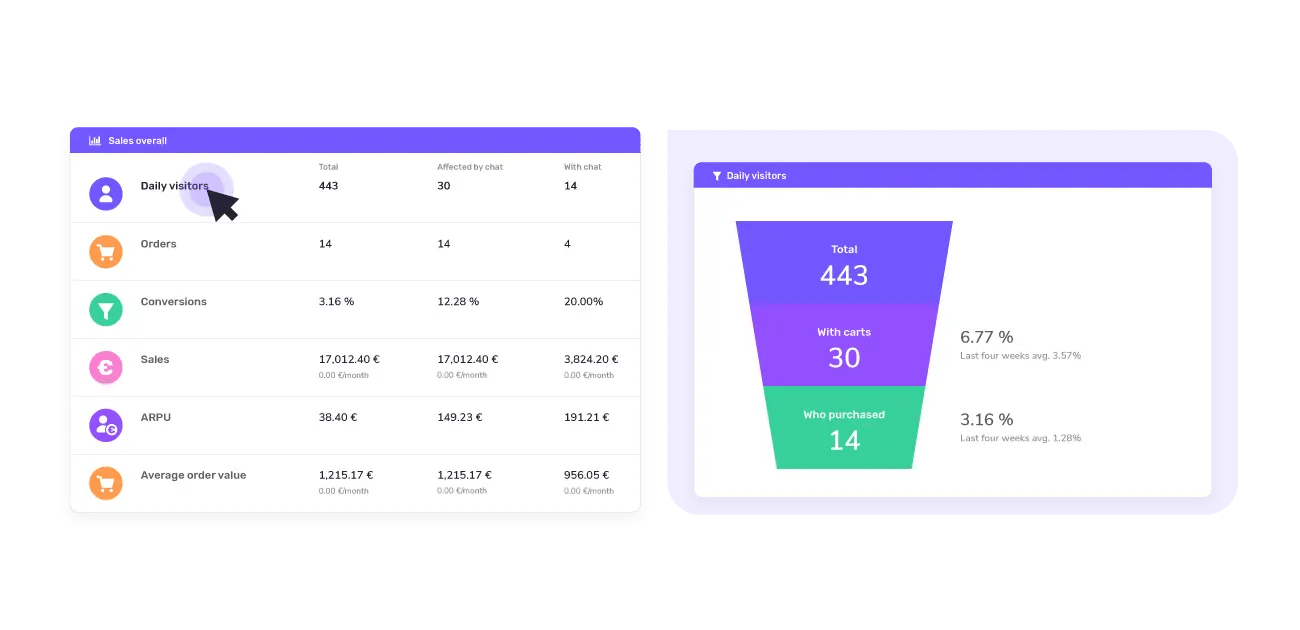
Finally, even with all the data in the world if you can’t make sense of it, it’s essentially worthless.
That's where unified dashboards and data visualization come in handy, by displaying your data in a simple and actionable way, it allows you to take out what is meaningful and useful to your business.
So throughout the highest sales period, make sure you have the right tools in place to be able to analyze your data.
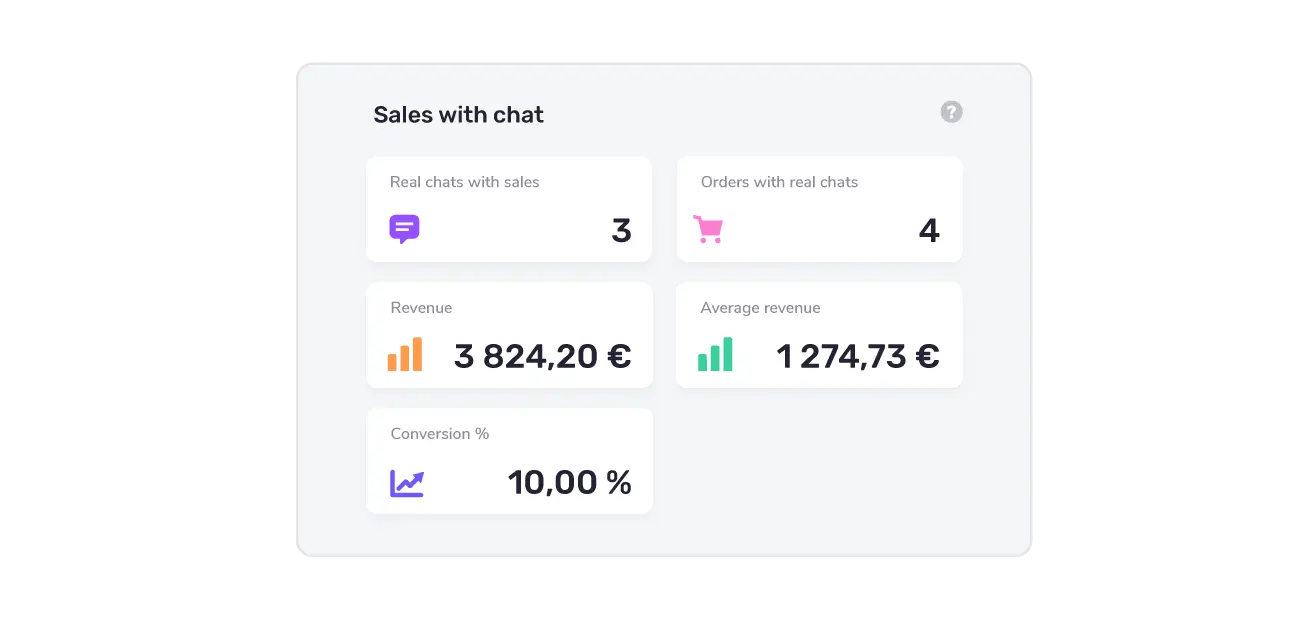
Get started
As the holiday season approaches, we want to help you optimize your eCommerce website for the most hectic time of the year.
We hope these tips give you new ideas on how to succeed in the new normal, tools to get ahead of your competitors, and actionable insights to increase your sales in 2024.
If you're interested in implementing any of the effective strategies mentioned in this guide, book a demo with us today!
